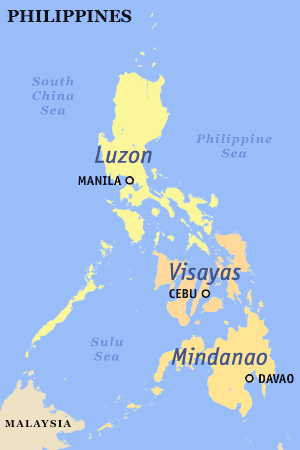The Visayas is one of the three principal geographical divisions of the Philippines, along with Luzon and Mindanao. It consists of several islands, primarily surrounding the Visayan Sea, although the Visayas are considered the northeast extremity of the entire Sulu Sea. Its inhabitants are predominantly the Visayan people.
The major islands of the Visayas are Panay, Negros, Cebu, Bohol, Leyte, and Samar. The region may also include the islands of Romblon and Masbate provinces, whose populations identify as Visayan and whose languages are more closely related to Visayan languages than to the major languages of Luzon.

There are four administrative regions in the Visayas: Western Visayas (4.47 million), Negros Island Region (4.41 million), Central Visayas (6 million), and Eastern Visayas (4.44 million).
The Visayas archipelago or the Kabisay-an has emerged as the tourism hub of the Philippines.
A few years back, the Department of Tourism (DOT) Philippines already recognized the importance of merging the entire Visayas Archipelago, together with the Bicol area, to create a “mega region” for tourism.
The Visayas Archipelago stretches from West Philippine Sea to the Pacific Ocean. Its nine major islands are divided by narrow seas and straits. Around them are hundreds of tiny islands, most of them not yet found in maps, some still nameless. Boracay is the most famous of the smaller islands, having all the basic and high-end tourist facilities. Malapascua and Bantayan in Cebu are already seasonal tourist destinations, while the quiet Calicoan Island is now being transformed into Eastern Samar’s “Boracay in the Pacific,” a new surfing spot in the country.

The jovial 18 million Visayan people are descendants of noble Malay migrants from the declining Sri Vijaya empire (In Indonesia "Sriwijaya", a vast maritime kingdom that was centered in South Sumatera, Indonesia) who settled in Panay in the 12th century AD. It was from Sri Vijaya that Visayas got its name and thus serves as a living memento of this ancient kingdom that once exerted influence in most of Southeast Asia. Settlers from the collapsing Hindu-Buddhist Srivijaya Empire led by Datu Putih and his retinue, settled in the island of Panay and its surrounding islands.

There are three major Visayan languages that are closely related and diverged into 36 speech varieties. It’s amazing to know that each of the three barangays of the seven-kilometer island of Boracay has its own dialect.
Visayans also take pride in that, despite the lack of architectural relics, somehow the great Sri Vijaya empire has left a living legacy in the name of the archipelago and its people, who are even romanticized by the Sanskrit origin of the word “Vijaya” which means “victory” or “excellence.” Visayans are pleased that significant dawning of events in Philippine history took place in their homeland.

History tells that island-hopping in the Visayas must have already been popular even during prehistoric times. Long before Magellan landed in Homonhon in 1521, traders from China, Arabia, Siam and even Greek traders as remote as 21 AD were already bartering in various parts of Kabisay-an. This is attested by the various relics of pots, porcelains, and semi-precious stones from different eras unearthed mostly in the shores of Iloilo, Cebu, and Bohol. These ancient souvenirs are now found in museums and private collections in Cebu and Iloilo cities.
Source :
- G. Nye Steiger, H. Otley Beyer, Conrado Benitez, A History of the Orient, Oxford: 1929, Ginn and Company, p. 120
- Boracaymagazine.net
- Enrique Maluku, Penjelajah Pertama Dunia |



















